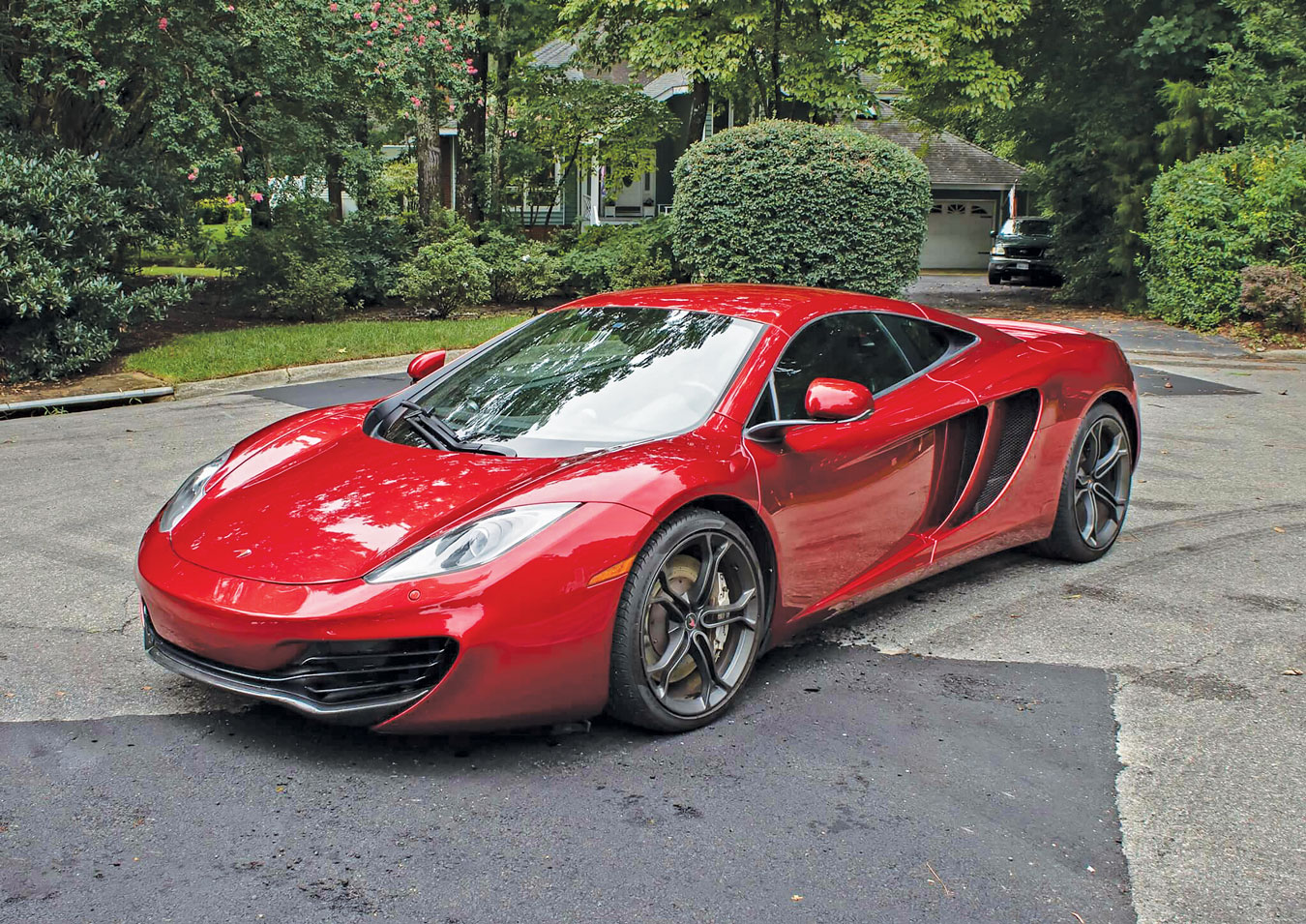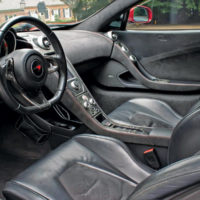SCM Analysis
Detailing
| Vehicle: | 2012 McLaren MP4-12C |
| Years Produced: | 2012–14 |
| Number Produced: | 3,400 |
| Chassis Number Location: | Engraved in the tub behind the passenger’s seat |
| Engine Number Location: | Stamped on the bottom of the block, visible from underneath with the engine floor off |
| Club Info: | McLaren Owners Club UK |
| Website: | http://www.mclarenowners.org.uk |
| Alternatives: | 2007–15 Audi R8, 2010–15 Ferrari 458, 2015–19 Chevrolet Corvette Z06 |
This car, Lot V-0021553, sold for $81,900, including buyer’s premium, in PCarMarket’s online auction on August 30, 2022.
The MP4-12C followed in the footsteps of the iconic F1, kicking off the modern-day McLaren line. Penned by Frank Stephenson, its styling has been critiqued as clinical (if not dull), but the design remains modern and has arguably grown more attractive than when new.
Upon its launch in 2011, the new McLaren model appealed to enthusiasts who wanted a pure supercar with extreme performance and advanced engineering. The car boasted a panoply of technologies and innovations, including a carbon-fiber tub design similar to the McLaren F1, but without its awkward passenger arrangement.
Even a decade on, the MP4-12C’s suspension represents a leap into the future, using a fluid-filled hydraulic system called ProActive Chassis Control that allows the car to switch between daily-driver comfortable and track-ready stiff. Its 7-speed dual-clutch transmission can launch the 2,900-pound car to 60 mph in 3.2 seconds. The MP4-12C has radical bodywork, including a dynamic spoiler and an active airbrake that make it a true 200-mph-capable supercar.
Bottom of Othe market
Our subject car is from the initial model year of 2012 (hence the MP4 prefix; later cars would just be called “12C”) and painted in stunning Mercury Red. With a list price of over $230,000 when new, this sub-$82k sale shows that these supercars are likely fully depreciated. This makes the MP-12C a great value in today’s white-hot market. Indeed, this is a lot of car for the money — and the outcome here was favorable for the buyer. Even with nearly 50,000 miles, this MP4-12C was well bought.
However, as with any 10-year-old supercar, caveat emptor must apply. Any buyer today has to remember that repairs on these cars are costly. If the MP4-12C breaks, it is not immune to the servicing costs that a quarter-of-a-million-dollar supercar can generate.
Even though the car is now over a decade old, it is still highly technical and loaded with complex software. While there are several legitimate aftermarket companies that specialize in McLarens, there are only 26 certified McLaren dealers in the U.S. that can properly work on the cars.
What goes wrong?
The MP4-12C is a mostly reliable and usable car, without a lot of the stereotypical supercar baggage. However, prospective buyers should be aware of some key maintenance and wear items. We spoke to a well-respected ex-McLaren insider with intimate knowledge of the MP4-12C, who helped identify several of the model’s weak points.
The most serious is that the car can develop problems with its suspension accumulators. The system utilizes a fluid-filled mechanism instead of physical sway bars. In the early cars, the nitrogen-filled accumulators are on the actual valve bodies (they were moved on later models), and if they fail, the suspension can be damaged.
Fortunately, it is easy to check for this problem. Toggling through the suspension modes while driving, if there is no discernible difference, chances are the accumulators have failed. Continued use with failed accumulators can cause significant damage to the actual suspension if not fixed. Additionally, if the dampers are leaking, there is a high probability that the accumulators have been broken for an extended period.
Transmissions are known to be durable, if not bulletproof. The clutch is wet, and the launch control is reliable, capable of banging off 0–100-mph acceleration runs all day long. The nature of the dual-clutch transmission practically invites you to put your foot in it and smash through the gears without losing any power upon acceleration. A small number of transmissions do, however, develop leaks. If a leak is apparent from the bottom of the casing, the transmission will need replacing, as the unit is not serviceable.
The engine is similarly reliable, and rarely are there any catastrophic engine failures. Intake leaks can, however, occur, causing fuel-trim issues that can damage the valve train. Check the exhaust pipes; the color and carbon build-up should be similar for each pipe.
Build quality
Because the MP4-12C was McLaren’s first foray into the production-car market, management put a strong emphasis on fit and finish, wanting the model to be the baseline for the brand’s quality reputation. The early cars were constructed in smaller numbers before McLaren moved production to its higher-volume factory and are generally quite well built.
That said, not all of the engineering was great out of the chute. McLarens are notorious for having terrible infotainment, and early cars had a first-generation system, which has gone NLA. McLaren performed a mid-production upgrade, which was a marked improvement, and many early cars got new upgraded systems when their originals failed under warranty. (You can recognize an upgraded infotainment system by its dedicated voice-recognition button.) If an old unit breaks, it needs to be replaced — at a cost of around $5,000.
As great as the MP4-12C is, modifications to the cars are common — and scary. If you are in the market, buy a stock car. Also, check the headlights for condensation and the interior carbon-fiber pieces for general wear and tear — anything carbon-fiber on these cars costs a fortune to replace. Finally, the “Volcano” colors are hard to match, so any exterior bodywork paint damage can be complex to repair.
Future collectible?
With prices now having dropped to well under half of MSRP, the big question is if (and when) they are likely to start heading back up. There are a few reasons that point to that likelihood.
The MP4-12C clearly has the pedigree and performance of a true supercar, yet it is wholly different from any Ferrari or Lamborghini. The 12C enjoyed a short three-year production run, and only 3,400 were made (with 40% being convertible 12 Spiders). This makes the 12C uncommon rather than rare; however, the original MP4-12C cars were made for just a year. The platform, as exceptional as it was, underpinned McLaren models for years as it evolved into the 650S.
Time will tell, but there should be enough collectible cachet as the first McLaren production road car to see the MP4-12C begin to gain interest and respect in the collector-car marketplace.
Furthermore, I have a good friend who owns and loves an MP4-12C, and he is emphatic about why: “Because you can drive it every day!” Indeed, the usability of McLarens is a huge point in their favor. Even if prices take a while to go up, owners have an amazing car to drive in the meantime. ♦
(Introductory description courtesy of PCarMarket.)


